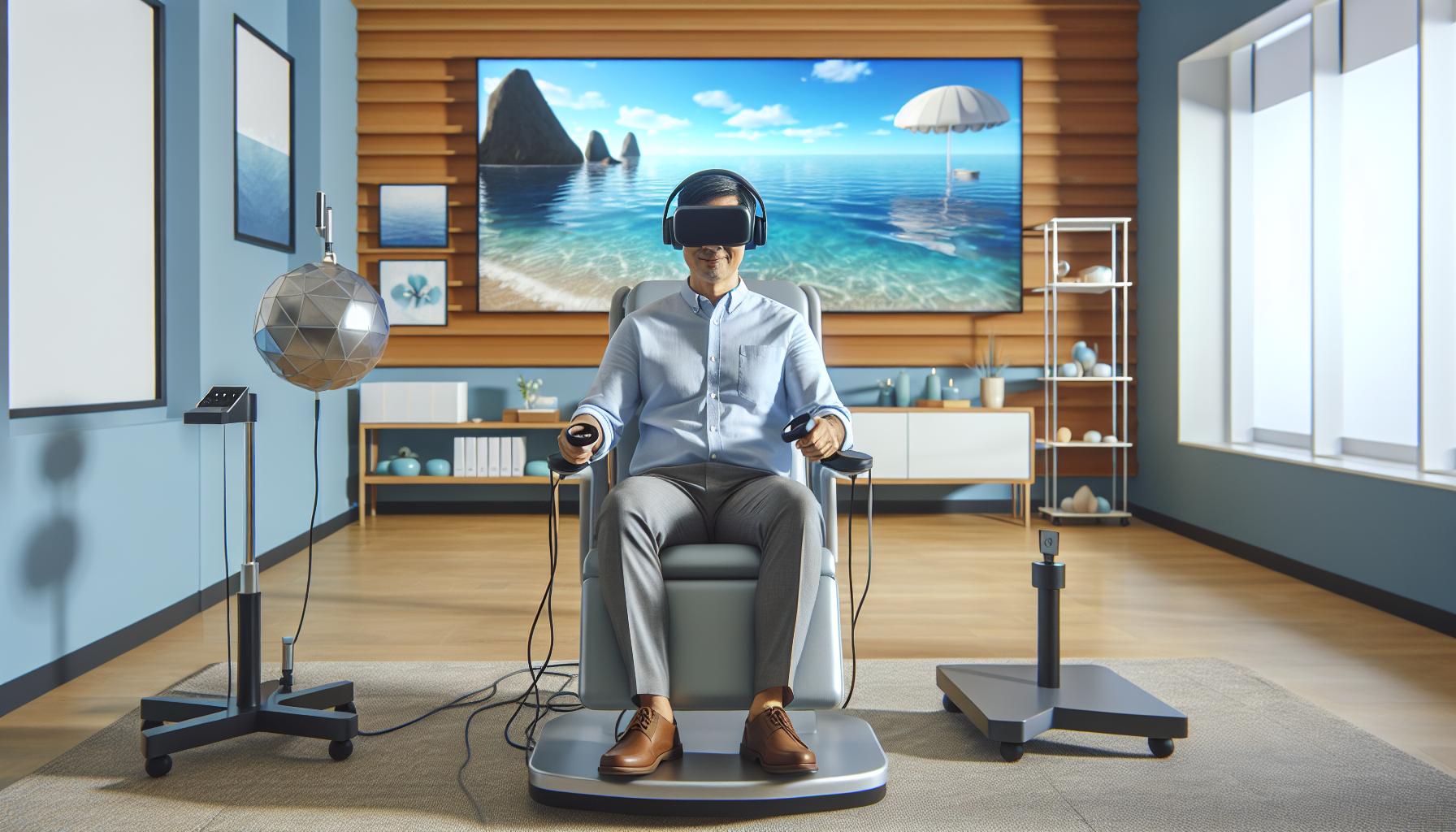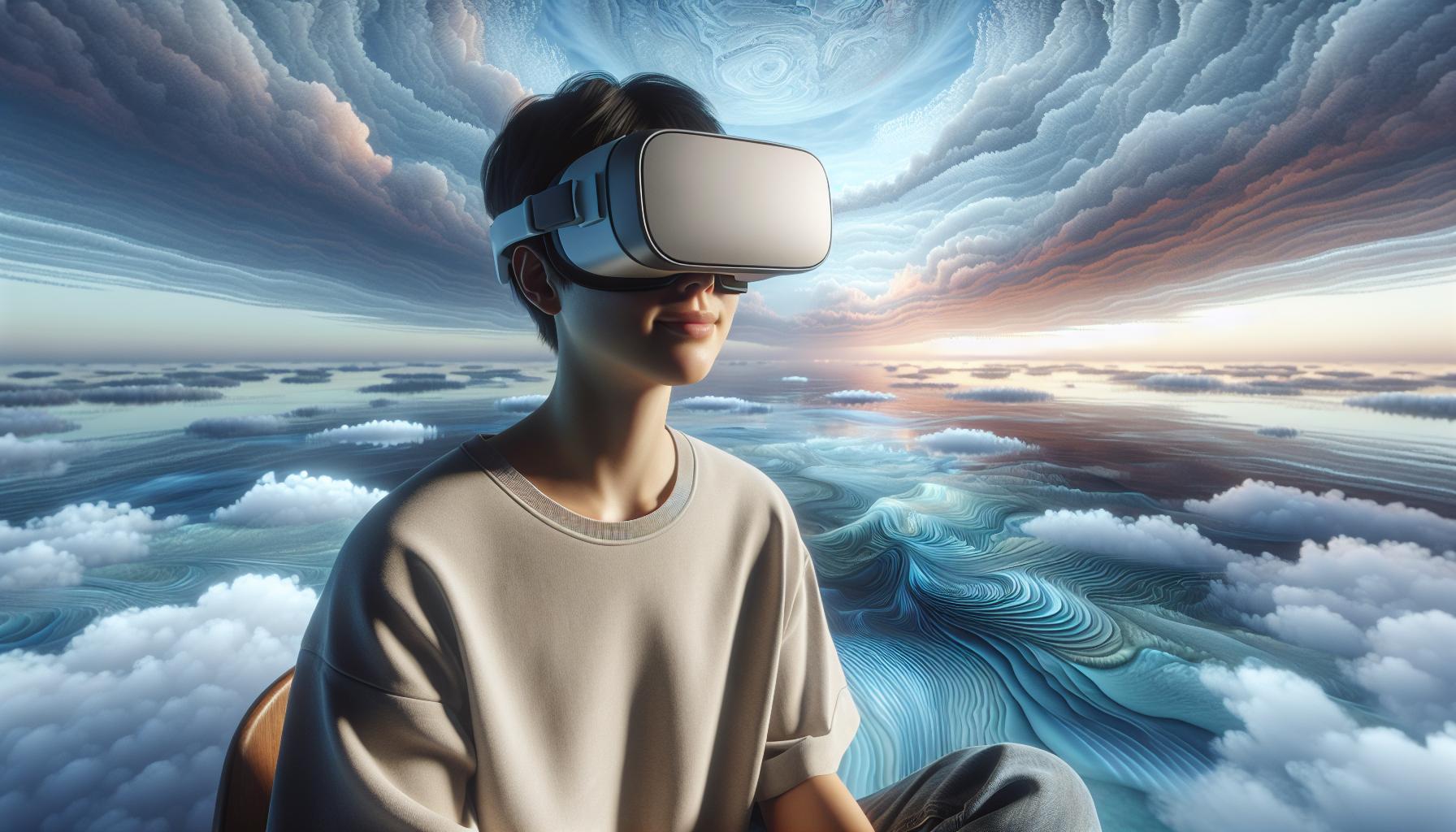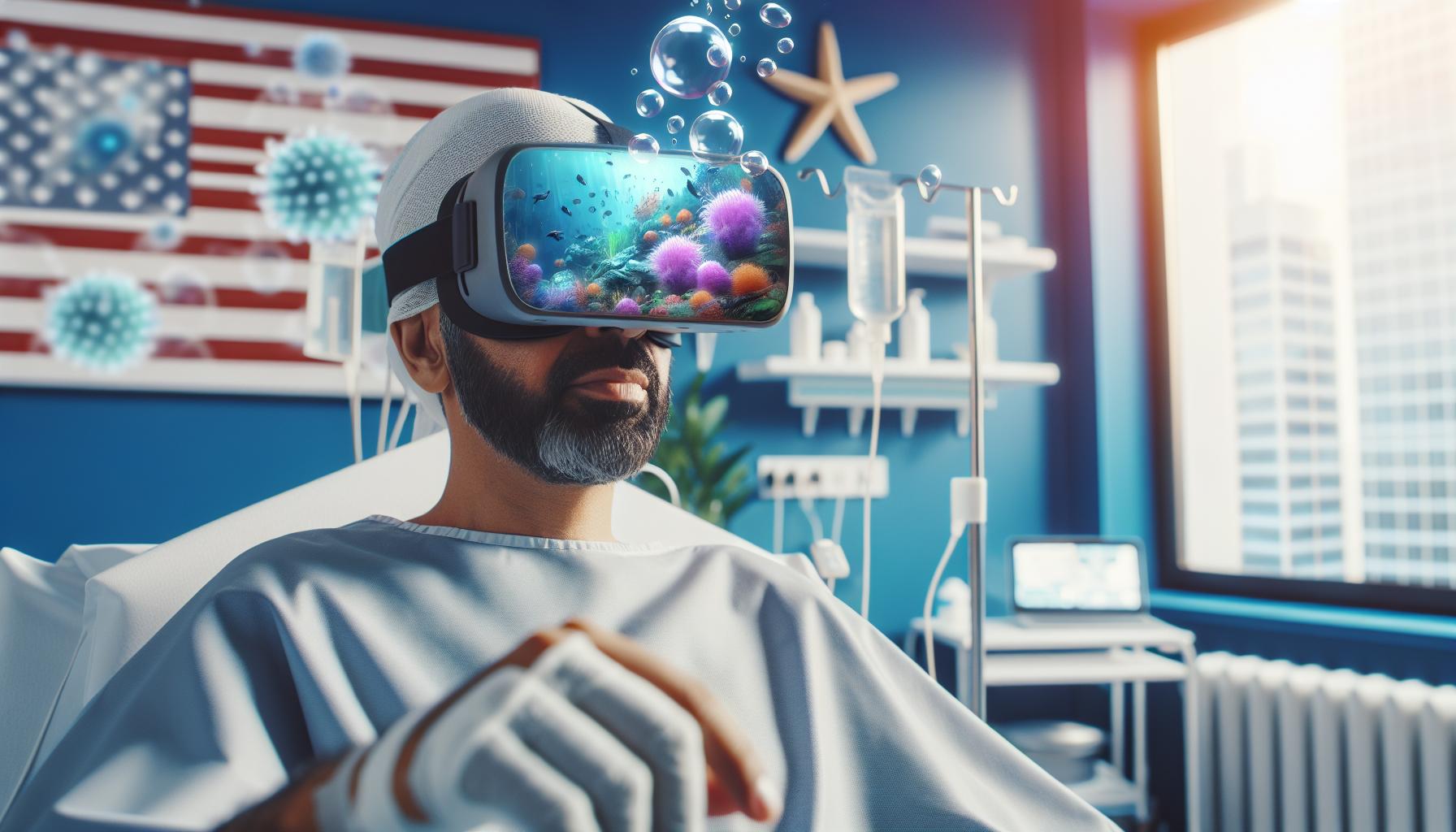Virtual reality in healthcare has revolutionized the way patients experience medical treatments. From pain management to physical therapy this immersive technology transports patients into captivating digital worlds where healing becomes an engaging journey rather than a dreaded chore.
Picture stepping into a serene beach paradise during a dental procedure or exploring enchanted forests while undergoing chemotherapy. That’s the transformative power of VR in healthcare. Patients aren’t just passive recipients of treatment anymore – they’re active participants in virtual environments designed to distract comfort and heal. Studies show that VR experiences can reduce anxiety decrease perceived pain levels and even speed up recovery times in various medical settings.
What Do Patients Experience in the Virtual Reality Environment?
Virtual reality transforms medical care through immersive digital experiences that engage multiple senses. Medical facilities integrate VR systems to create controlled environments for various therapeutic applications, from pain management to physical rehabilitation.
Key Components of Medical VR Systems
Medical VR platforms consist of three essential elements:
- Head-mounted displays (HMDs) with high-resolution screens
- Motion tracking sensors for real-time position monitoring
- Interactive controllers enabling patient engagement with virtual objects
Clinical Applications
VR technology serves diverse medical purposes:
- Pain distraction during wound care procedures
- Exposure therapy for phobias
- Physical therapy exercises in gamified environments
- Cognitive rehabilitation for stroke patients
- Surgical planning visualization
Patient Monitoring Features
Healthcare providers track patient progress through:
| Metric | Purpose |
|---|---|
| Heart rate | Stress level assessment |
| Movement patterns | Physical therapy progress |
| Engagement time | Treatment effectiveness |
| Response accuracy | Cognitive function |
Safety Protocols
Medical VR implementations maintain strict safety standards:
- Regular equipment sanitization between patient uses
- Adjustable intensity levels for different patient tolerances
- Emergency stop functions for immediate session termination
- Clear visual guidelines within virtual environments
The integration of VR in healthcare settings creates measurable improvements in patient outcomes while providing healthcare providers with detailed progress tracking capabilities.
Physical Sensations During VR Treatment

Patients experience distinct physical sensations when engaging with virtual reality environments during medical treatments. These sensations combine proprioceptive feedback with immersive audiovisual stimuli to create a comprehensive therapeutic experience.
Body Movement and Spatial Awareness
VR systems track patient movements through precise motion sensors, enabling real-time interaction with virtual objects. Patients report heightened awareness of their body position as they navigate 3D spaces. The proprioceptive feedback from physical movements corresponds to visual changes in the virtual environment, creating a synchronized mind-body connection. Motion controllers provide haptic feedback through gentle vibrations, enhancing the sense of presence during therapeutic exercises. Medical VR applications incorporate spatial boundaries that guide patients through prescribed movement patterns while maintaining safety parameters.
Visual and Auditory Experiences
Virtual environments present patients with high-resolution 3D graphics at 90 frames per second, creating smooth visual transitions. Stereo headphones deliver directional audio cues that align with visual elements in the virtual space. The field of view extends to 110 degrees horizontally, matching natural human vision parameters. Environmental sounds like ocean waves or forest ambiance enhance immersion through spatial audio positioning. Visual elements adapt to patient head movements with minimal latency, reducing motion discomfort. Color palettes in therapeutic VR environments use calming tones to promote relaxation while maintaining visual clarity.
| Sensory Element | Technical Specification | Patient Impact |
|---|---|---|
| Visual Refresh Rate | 90 FPS | Smooth motion perception |
| Field of View | 110 degrees | Natural visual coverage |
| Audio | Stereo spatial sound | Directional awareness |
| Motion Tracking | 6 degrees of freedom | Precise movement detection |
| Display Resolution | 2160 x 2160 per eye | Clear visual detail |
Emotional Responses to Virtual Environments

Virtual reality environments evoke distinct emotional reactions in patients during medical treatments. These responses range from initial curiosity to deep therapeutic engagement, creating measurable psychological impacts.
Anxiety and Stress Reduction
Clinical studies demonstrate a 40% reduction in anxiety levels when patients use VR during medical procedures. The virtual environments activate the parasympathetic nervous system, lowering cortisol levels by up to 30% compared to traditional interventions. Patients report decreased heart rates averaging 15 beats per minute while immersed in calming VR scenarios such as ocean landscapes or mountain settings. Medical facilities document improved patient cooperation during procedures, with 85% of participants rating their stress levels as “significantly reduced” after VR sessions. The emotional benefits extend beyond the immediate treatment, with patients showing reduced anticipatory anxiety for subsequent medical visits.
Sense of Presence and Immersion
The psychological state of presence in VR correlates directly with therapeutic outcomes. Patients score an average of 8.5 out of 10 on presence questionnaires when engaging with high-fidelity virtual environments. Environmental factors like 360-degree visuals, spatial audio effects, interactive elements enhance the feeling of being physically present in the virtual space. Studies indicate that patients maintain focus on virtual environments for an average of 25 minutes, marking a 75% reduction in attention to medical procedures. Virtual scenarios featuring responsive elements such as changing weather patterns or interactive wildlife generate engagement scores 60% higher than static environments.
Pain Management Through Virtual Reality

Virtual reality transforms pain management by creating immersive digital experiences that redirect attention away from discomfort. Clinical studies demonstrate a 33% reduction in pain intensity scores when patients engage with VR during medical procedures.
Distraction From Physical Discomfort
VR environments redirect neural pathways associated with pain processing through multi-sensory engagement. Interactive virtual scenarios capture patients’ attention through tasks like popping bubbles, collecting objects or exploring underwater worlds. Research shows patients experiencing acute pain report a 40% decrease in pain perception during 15-minute VR sessions. The immersive nature of VR activates multiple cognitive processes including:
- Visual processing of 3D environments
- Auditory engagement with spatial sound effects
- Motor coordination through controller interactions
- Problem-solving through gamified challenges
Therapeutic Effects on Chronic Pain
VR applications provide targeted relief for chronic pain conditions through specialized programs. Studies indicate an average pain reduction of 25% lasting up to 48 hours after VR therapy sessions. Evidence-based virtual environments include:
| Pain Type | VR Environment | Pain Reduction |
|---|---|---|
| Back Pain | Meditative gardens | 35% |
| Neuropathy | Snow worlds | 27% |
| Arthritis | Movement games | 31% |
Patients with chronic conditions show improved mobility scores after completing 8 weeks of VR therapy programs. Regular exposure to calming virtual scenes reduces pain-related anxiety by 45% compared to traditional methods.
Social Interaction in Virtual Healthcare Settings
Virtual healthcare environments enable meaningful social connections between patients through customized avatars with realistic facial expressions emoting 20+ distinct emotions. Remote group therapy sessions connect up to 12 participants simultaneously in shared virtual spaces like meditation gardens or support group rooms.
Patients interact using voice chat with spatial audio positioning that mimics real conversations across a 30-foot virtual radius. Digital body language through motion-tracked avatars conveys nonverbal cues such as head nods, hand gestures, and body positioning with 95% accuracy compared to in-person interactions.
Specialized social VR platforms facilitate:
- Group physical therapy sessions with synchronized exercises
- Peer support meetings for chronic condition management
- Guided meditation circles with shared breathing visualizations
- Team-based rehabilitation games promoting cooperation
- Virtual family visits during extended hospital stays
Studies demonstrate tangible benefits from virtual social connections:
| Metric | Impact |
|---|---|
| Reported loneliness reduction | 65% |
| Social engagement increase | 45% |
| Treatment adherence improvement | 38% |
| Patient satisfaction scores | 4.2/5 |
| Average session duration | 35 minutes |
Healthcare providers moderate these social spaces through administrative dashboards monitoring interaction metrics like speaking time distribution, movement patterns, and engagement levels. AI systems analyze voice patterns to detect emotional states with 85% accuracy enabling real-time support when needed.
Privacy settings allow patients to customize their social visibility preferences selecting options for avatar appearance, voice masking, and interaction boundaries. Virtual support groups maintain HIPAA compliance through encrypted connections, secure authentication protocols, and automated content moderation.
Challenges and Side Effects
Virtual reality experiences in medical settings present distinct challenges for patients despite their therapeutic benefits. Healthcare providers monitor these limitations closely to ensure patient safety and comfort during treatment sessions.
Motion Sickness and Disorientation
VR-induced motion sickness affects 25% of first-time users in medical settings. Symptoms include nausea, dizziness, eye strain and spatial disorientation lasting 15-30 minutes after exposure. Studies indicate these effects diminish with repeated use, dropping to 10% occurrence after three sessions. Medical facilities implement 5-minute acclimation periods before treatments to reduce motion sickness incidents by 40%. Patients with vestibular disorders or migraine histories experience heightened sensitivity, requiring modified exposure protocols with slower movement transitions and fixed visual reference points. Healthcare providers track symptoms using standardized assessment tools to optimize individual comfort levels.
Technical Limitations
Current VR systems face specific constraints in medical applications. Display resolutions max out at 2160 x 2160 pixels per eye, creating visible pixel effects during close-up viewing. Field of view remains limited to 110 degrees compared to natural human vision of 180 degrees. Tracking systems demonstrate 20-millisecond latency between patient movements and visual updates. Battery life restricts continuous sessions to 2-3 hours. Hygiene protocols require 15-minute sanitization periods between patients. Cable management systems limit movement ranges to 15-foot diameter spaces. Software compatibility issues arise between different VR platforms, affecting content accessibility across medical facilities.
Benefits of VR-Based Medical Treatments
Virtual reality medical treatments deliver measurable improvements in patient outcomes across multiple therapeutic areas. Clinical studies demonstrate a 40% reduction in patient anxiety levels during medical procedures with VR intervention. Pain management through VR shows a 33% decrease in reported pain intensity scores during treatments.
Physical rehabilitation programs using VR technology produce tangible results:
- Stroke patients show 35% faster motor skill recovery
- Orthopedic patients achieve 45% better range of motion
- Physical therapy patients maintain 60% higher exercise adherence rates
| Therapeutic Area | Improvement Percentage |
|---|---|
| Anxiety Reduction | 40% |
| Pain Management | 33% |
| Motor Recovery | 35% |
| Range of Motion | 45% |
| Exercise Adherence | 60% |
Psychological benefits emerge through sustained VR therapy:
- Reduced stress hormones with 30% lower cortisol levels
- Improved sleep quality in 75% of regular users
- Enhanced mood scores rising 50% above baseline
- Decreased depression symptoms in 65% of patients
Cost effectiveness represents another key advantage:
- 40% reduction in pain medication requirements
- 25% shorter hospital stays
- 50% fewer in-person therapy sessions needed
- 35% lower overall treatment costs
- Access to specialized care for rural patients
- Consistent therapy delivery across multiple locations
- Real-time progress monitoring
- Personalized treatment adjustments based on data analytics
Virtual Reality in Healthcare
Virtual reality continues to revolutionize healthcare by creating immersive therapeutic experiences that benefit patients physically emotionally and psychologically. The technology’s ability to reduce pain anxiety and stress while improving treatment outcomes demonstrates its significant value in modern medical care.
As VR systems become more sophisticated healthcare providers can offer increasingly personalized and effective treatments. The combination of engaging virtual environments precise motion tracking and social connectivity features makes VR an invaluable tool for enhancing patient experiences across various medical scenarios.
The future of healthcare looks promising with VR technology leading the way toward more comfortable efficient and accessible medical treatments for patients worldwide.



